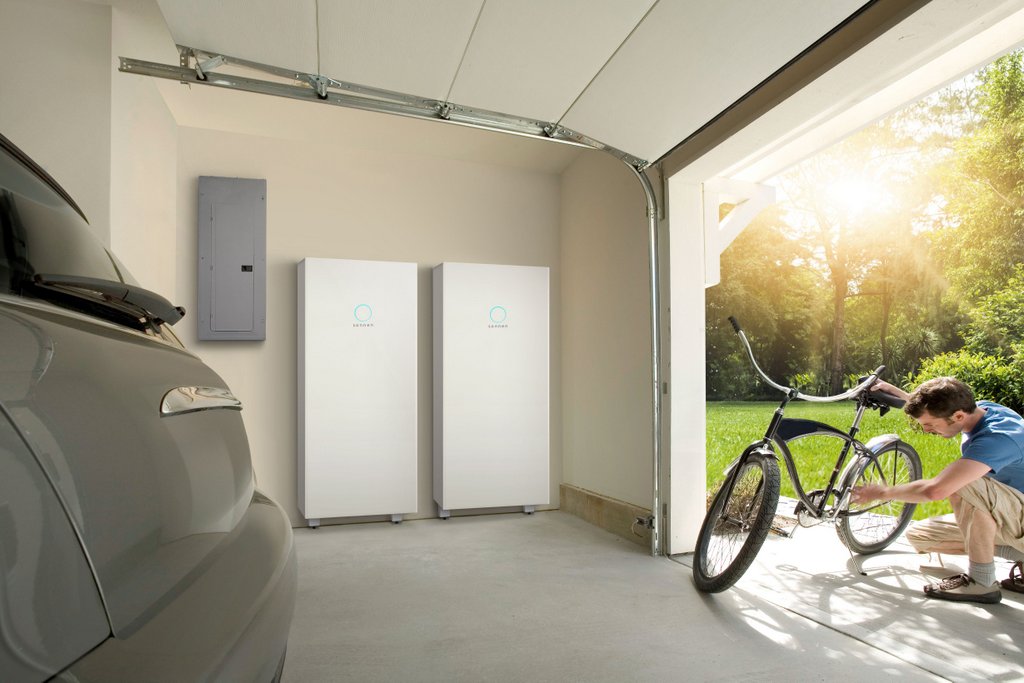Canadian solar market snapshot
Chatting with Charge Solar about the policy, pricing, and product trends reshaping the solar market across Canada

The distributed solar + storage market in Canada is starting to come into its own. Panel prices continue to decrease, commercial interest is ticking up thanks to tax credits, and battery demand is creeping higher even without sky-high electric bills or California-style mandates. That momentum is drawing in more installers — some diving straight into solar + storage as their focus, others branching out from already successful lines of business.
For a broader view of the market forces shaping 2025, we sat down with Charge Solar VP of sales Brian Douglas. In this Q&A, he unpacks how incentives, financing shifts, tariffs, code changes, and new product lines are influencing Canadian solar — and what installers should be watching next.
Subscribe!
If this is your first time visiting Solar Builder Canada, be sure to sign up for our newsletter.
Commercial solar & tax credits
SB: How is business going in Canada in 2025?
Brian Douglas: Business has been relatively strong across Canada. Definitely gaining traction in the commercial area. Although some residential markets are slowing down due to lesser return on investment (ROI) based off utility rates and changes in utility programs. If we take a look at Alberta specifically, their utility rate was substantially higher at this point last year than it is right now.
Some of the utility programs are changing. We’re seeing a shift from what was called net metering over to net billing in different jurisdictions like British Columbia where it used to be one to one, and now you’re getting a dollar value credit on anything that’s hitting the street. But year to date, we’ve had strong growth in the amount of wattage out the door. Solar panel pricing has also dropped by around 40% y/y.
SB: On the commercial side, the 30% Clean Technology Investment Tax Credit could really change the market longer term. Are we seeing that rise in C&I solar projects yet?
Brian: It makes commercial solar substantially more viable and cost competitive than it would have been before the ITC was in place. We are seeing projects going in at a decent pace right now, but the bill only came into law last year, and the sales cycle for a commercial install or small utility project can be a year to 18 months. So, the impact is just starting to be felt.
There is also the possibility of a Clean Electricity ITC, which is would be a 15% reduction for nonprofits and non-taxpaying entities. But that one is still in progress to be created into bill and put into law. It’s not in play as of right now.
SB: What about solar + storage projects? Does the ITC get applied to the total system, or could they be considered separate systems?
Brian: The ITC encompasses the cost of the battery in the application. It would be eligible as a cost although it is a more expensive portion of the system. The scope, the size is all something to consider when designing a project, but battery storage is encompassed in the ITC as far as what’s eligible for the tax rebate.
On the residential side, one of the only provinces that is additionally incenting storage is British Columbia. They have an additional $5,000 incentive on storage and $5,000 on the solar PV system, and that’s directly from the utility, BC Hydro. They also have a commercial battery incentive for adding commercial battery storage. Note that there are other provinces with incentives, but they are smaller markets.
Residential ROI
SB: How do government subsidies impact the interest in home solar?
Brian: We have an artificially low cost of electricity in a few different provinces. Of the larger markets, the main provinces that have a subsidized rate are:
- British Columbia, the taxpayer pays for the infrastructure of the dams and the electricity generators to go up as opposed to it being in embedded in the cost of the electricity.
- Same in Quebec. It’s a bit of a reduced cost per kilowatt hour that’s actually hitting the home.
In Ontario, they’re actually just subsidizing the actual cost of the electricity that is coming through via government incentive reductions. - And then if you get into open market provinces like Alberta, Saskatchewan, they’re producing power at quite a low rate as well.
We do see on average our cost per kWh is generally about half that of the U.S. If you’re selling based on ROI only, that does become more difficult. But our average installed cost is also substantially lower than what’s being installed in the United States.
The average residential install in the United States is roughly US$3 per W. We’re lower than that even in Canadian dollars. You’re seeing a 35% or more reduction in cost for anything being installed in Canada on a residential install.
SB: Those incentives aside, how are solar systems getting financed? Largely through cash and loan?
Brian: We are in a fairly unique scenario where there is a federal 0% interest $40,000 loan which has made solar very attractive — the Greener Homes Loan program. It is not just for solar, it is for HVAC, building envelope, windows, insulation, basically anything in home renovation that is reducing your carbon footprint.
That has made solar extremely attractive for end users, but that will change soon. We have worked with the government to be able to calculate that it’s likely running out before the end of this year. That’s not to say that they couldn’t re-up the system or replace it with a different system. See p.13 for more information.
SB: Considering the lower electricity rates in general, and the higher costs of lithium-ion batteries, what is the demand like for energy storage systems (ESS) right now?
Brian: A couple years ago, we were seeing about 3% of the PV systems sold were adding solar + storage. This year it is about five times that amount. We’re up to about 15% over the last couple years, depending on what region you’re in. Some of that is just consumer interest, and some of that is the fact that the cost has come down pretty substantially.
But we don’t have any mandates, like in California, that largely requires battery storage to be tied to the grid. We don’t have that fierce driving factor. It’s more for people who have unique scenarios, like dedicated load requirements for safety and health reasons, or if you’re at the end of the grid where your power is going down quite often. Those are the key drivers as opposed to any pure economic ROI where you can buy power at a low rate and sell it at a high rate.
Tariff talk
SB: How does the U.S. solar market’s volatility, and the ebb and flow of different tariffs, impact pricing or the market in general in Canada?
Brian: There’s been just a slight trickle through on aluminum extruded products because that was one of the first areas hit through the U.S. / Canadian tariff situation. We do have some products that are brought in from the U.S., particular clamps for types of roofs, and those are tariffed and more expensive. There are some combiner boxes and junction boxes that come in through the United States that have a higher cost, but it’s a pretty small amount of our equipment.
We basically had about four vendors affected. The rail that we’re providing through Fastrack is Canadian made and is not applied to the tariffs. That’s not to say that the Canadian government isn’t going to put additional tariffs on the Chinese product at a later date, but as of right now, we haven’t seen the tariffs be a substantial cost increase to anything in our product line.
SB: You mentioned China, and you also mentioned the lower price of modules in Canada. In the United States, solar modules or cells linked to China in basically any way have a series of tariffs attached. Some get detained indefinitely at Customs. With the United States having such an influence on the global market, does the higher pricing of solar modules in the U.S. impact the pricing in Canada in any way?
Brian: We don’t really see that effect. In Canada, we are allowed to bring in a product that has a Chinese cell in it without tariff, but we can’t bring in a module that is manufactured in China without a massive tariff of over 200%. So, we can bring in a Malaysian-made product or Korean-made product that has Chinese cells in it. Therefore, the product that we’re bringing in is almost half the cost of some of the product being sold into the United States.
The effect we do see is, we can’t take our product and ship it across the border into the U.S. and have supplementary sales into the United States without it being hit by a very large tariff. It puts a stop to any of the products being sold in Canada at a much lower price from hitting the United States.
Procurement patterns

SB: On the product side, many inverter and ESS companies are expanding their product lines to account for the growing connection of solar + storage — everything from hybrid inverters to smart electrical panels and EV chargers. Are installers gravitating toward those unified product ecosystems?
Brian: For sure. For lack of a better term, you’re talking about having “one throat to choke.” If there’s something going wrong with the entire system, you don’t want two vendors pointing at each other saying they are the problem. From an end-user perspective though, in some applications, there are pairings that work very well together and are high movers from us. So, far from a necessity, but it can be nice to have all under one wrap.
SB: What brands do you see installers gravitating to?
Brian: By volume, our largest mover in our distribution network is APsystems. They have a strong microinverter product and cost. Enphase does have a strong following here as well, but they’re positioning themselves as a premium product. Solis, SolarEdge, and Fonius are the major players on the string inverter side that we’re distributing.
SB: What about when it comes to smart load centers? Are installers looking to connect PV and ESS to those more robust, smart energy management systems?
Brian: For sure. More and more of the inverter manufacturers are tying that into their product offerings. You see that with Fronius. SolarEdge has it built into their infrastructure.
A lot of the battery manufacturers, like FranklinWH or PointGuard, they’re all integrating smart load assists to try to make your home smarter and not run the loads when the power is out, or to have priority load shedding when you are getting close to a lower depth of discharge on your battery.All of that becomes a living home environment where you’re making the most out of your situation. You don’t want to be running the tumbler dryer when you’ve only got 20% of your battery left.
Installer insight
SB: Are there code changes that you want to make sure installers are getting out ahead of?
Brian: One of the big changes to the new 2024 electrical code is requiring critter guards on all different installations, that’s including microinverter and optimized solutions. That wasn’t mandatory in the previous code.
SB: When does that go into effect?
Brian: That really depends on adoption. The 2024 code will get adopted in different regions at different times, but it is at minimum before the end of this year. Depending on what jurisdiction you’re in, it may already be in effect, but there are some jurisdictions that will wait to the 11th hour, which would be Jan. 1 of 2026.
SB: As focused as we are on the solar system itself, solar installers often benefit from diversifying their business in various ways. Beyond tacking on batteries or an EV charger, maybe it’s installing a smart home product, like automated window shades, or something more everyday like HVAC. Are you seeing Canadian installers with diverse business lines?
Brian: Definitely. HVAC and roofing we’ve identified as two of I’d say the “lowest hanging fruit” for having crews that are already dealing with electrical, already there making the sale, already getting on the roof and dealing with being able to warranty some of the work that’s being done.
There’s a predominant roofing company in Vancouver whose name switched to indicate they are more than roofing, they are solar + roofing because there’s so much solar going on in their company. You do see adjacent markets that are getting into the industry because it’s a good fit.
I mean, my personal home, I’ve got a heat pump and solar on my roof and an electric vehicle. So, I’m the consumer that you’re targeting.
SB: Thinking of your personal example, would you say there is a movement in Canada for “all-electric” homes and buildings? There is a good argument for going in that direction, but that can also be a political football.
Brian: I wouldn’t say all across Canada, but in British Columbia specifically there were some bans on adding gas to new builds in certain municipalities. I believe that those have been dropped from at least one of the municipalities where that was in play. But, it’s front of mind now, is what I would say. Some people are going the electrification route instead of gas. But, again, our natural gas prices are extremely low. It is a cost/benefit analysis that everybody has to do.
Final thoughts
SB: As we wrap up, if you had to give Canadian installers one piece of advice in 2025, what would it be?
Brian: Work on getting your soft costs down. Perfecting your installations. There’s the old adage that good news can travel fast, but bad news travels 10 times as fast. One bad install can really hurt your reputation. Make sure that you fix any disputes that you have with your clients. We’re living in a day and age where having your portfolio out there and visible, it just does so much for your brand image. If I’m hiring somebody as a contractor, I want to know that they’ve done a job of similar size, and having that on your website and social media … what used to maybe be a little bit braggadocious is almost mandatory nowadays to show that you are a reputable installation company.
Also, get involved. If you have a local industries association that you can join, they will help try to navigate getting incentives brought into your area. You can get your voice heard. Our CEO is part of CanREA, the national association putting on the Electricity Transformation Canada trade show. I’m personally the vice chair of the British Columbia Sustainable Energies Association (BCSEA). We’re dedicating our time to try to grow the industry and lift all boats. Having the voice of those industries associations, and showing government how much a misplay could hurt these industries is important.
SB: Anything new with Charge Solar you want to shout out this year? Especially in terms of solar education and product training?
Brian: We put on multiple shows a year. We do live two-day trainings in our Victoria, Calgary, Ontario, and Nova Scotia locations. We do a two-week online webinar series in the in the spring that goes over a bunch of the different vendors. We have impromptu hands-on trainings that are put up all across Canada. We do have a code section in our live and online training, and we have experienced mechanical engineers and master electricians to help installers when they run into code issues.
We’re trying to help the installers get better. We realize that there are installers that are putting up hundreds of systems a month that are very well versed on what they’re doing, but they might not know about the newest widget or the newest application. We can bring that to them.





Comments are closed here.